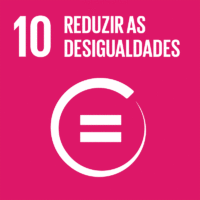Ciência_Iscte
Publicações
Descrição Detalhada da Publicação
Sexuality, sexual behavior, and relationships of asexual individuals: Differences between aromantic and romantic orientation
Título Revista
Archives of Sexual Behavior
Ano (publicação definitiva)
2022
Língua
Inglês
País
Estados Unidos da América
Mais Informação
Web of Science®
Scopus
Google Scholar
Esta publicação não está indexada no Overton
Abstract/Resumo
Asexuality is a complex construct with a considerable lack of research until recently. Building upon available findings, we examined the extent to which romantic orientation shapes individual and relationship experiences, and expectations of asexual individuals. Specifically, our research focused on the distinction between romantic asexual individuals, who experience romantic attraction, and aromantic asexual individuals, who do not experience romantic attraction. A cross-sectional study with members of different asexual online communities (N = 447, 55.02% women; Mage = 24.77, SD = 7.21) aimed at examining how both groups differ in their identification with the asexuality construct as measured by the Asexuality Identification Scale (Yule et al., 2015), individual perspectives on sexuality, sexual behavior and relationships, concerns about commitment and sexual performance in a relationship, and attachment style. Results showed that aromantic asexual individuals identified more with asexuality, reported a more avoidant attachment style, and were more concerned with relationship commitment. In contrast, romantic asexual individuals reported less sex aversion, more sexual experiences (both past and current), and more sexual partners in the past. These individuals also engaged in romantic relationships more frequently in the past, had a stronger desire to engage in a romantic relationship in the future (either with or without sexual intimacy), and were more concerned with sexual performance. Overall, our findings contribute to the literature by highlighting the need to consider romantic orientation when examining asexuality and its interpersonal outcomes.
Agradecimentos/Acknowledgements
--
Palavras-chave
Asexuality,Romantic orientation,Romantic,Sexuality,Relationship outcome,Aromantic
Classificação Fields of Science and Technology
- Psicologia - Ciências Sociais
- Artes - Humanidades
- Outras Humanidades - Humanidades
Registos de financiamentos
| Referência de financiamento | Entidade Financiadora |
|---|---|
| 2020.00523.CEECIND | Fundação para a Ciência e a Tecnologia |
| UIDB/03125/2020 | Fundação para a Ciência e a Tecnologia |
Contribuições para os Objetivos do Desenvolvimento Sustentável das Nações Unidas
Com o objetivo de aumentar a investigação direcionada para o cumprimento dos Objetivos do Desenvolvimento Sustentável para 2030 das Nações Unidas, é disponibilizada no Ciência_Iscte a possibilidade de associação, quando aplicável, dos artigos científicos aos Objetivos do Desenvolvimento Sustentável. Estes são os Objetivos do Desenvolvimento Sustentável identificados pelo(s) autor(es) para esta publicação. Para uma informação detalhada dos Objetivos do Desenvolvimento Sustentável, clique aqui.

 English
English




